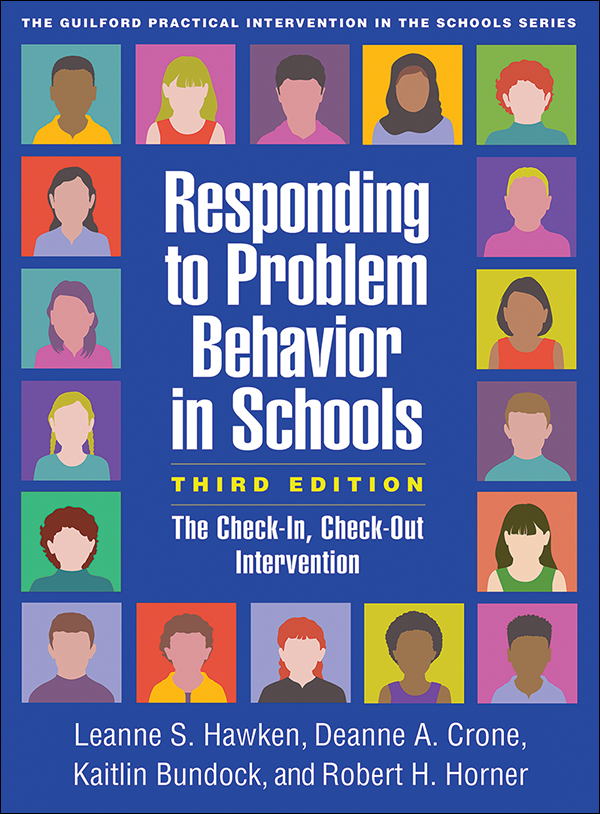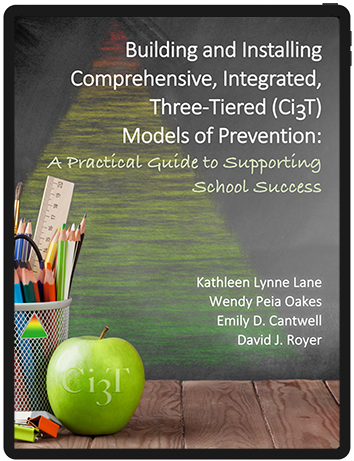RECENT PUBLICATIONS
Using Low-Intensity Strategies to Support Engagement: Practical Applications in Remote Learning Environments for Teachers and Families
 Special Issue in Preventing School Failure: Alternative Education for Children and Youth currently online first, all about low-intensity strategies in remote settings for both teachers and families at home.
Special Issue in Preventing School Failure: Alternative Education for Children and Youth currently online first, all about low-intensity strategies in remote settings for both teachers and families at home.
BOOK: NEW SECOND EDITION
Developing a Schoolwide Framework to Prevent and Manage Learning and Behavior Problems
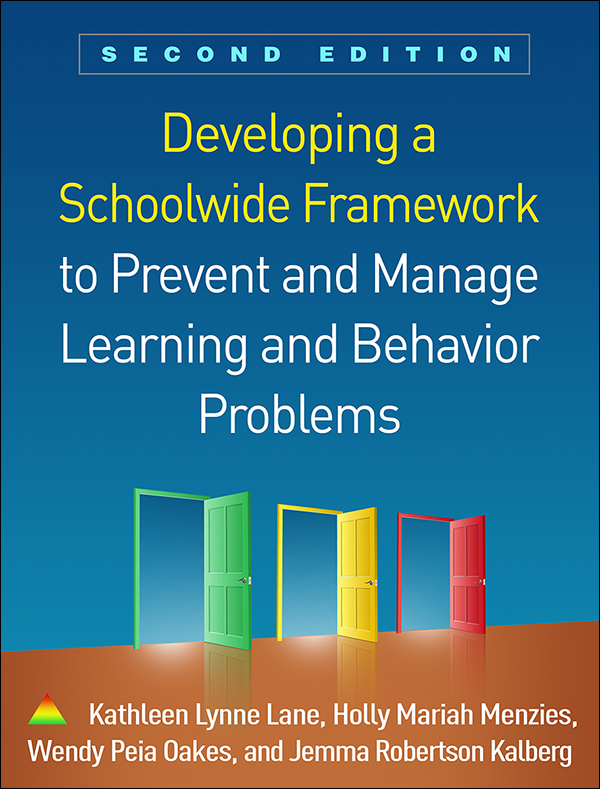
“Now revised and expanded, this volume explains how to design, implement, and evaluate a comprehensive, integrated, three-tiered (Ci3T) model of prevention. Rather than presenting a packaged program, the book provides resources and strategies for designing and tailoring Ci3T to the needs and priorities of a particular school or district community. Ci3T is unique in integrating behavioral, academic, and social–emotional components into a single research-based framework. User-friendly features include tools for collecting and using student and schoolwide data; guidance for selecting effective interventions at each tier; detailed case examples; and tips for enhancing collaboration between general and special educators, other school personnel, and parents. In a convenient large-size format, the volume includes several reproducible forms that can be downloaded and printed for repeated use.” (From: Guilford Press)
JOURNAL SPECIAL SERIES: LOW-INTENSITY STRATEGIES
Volume 27, Issue 3, published December 2018 in Beyond Behavior: A Journal Exploring Behaviors of Children and Youth

The Volume 27, Issue 3, 2018 special series on low-intensity strategies in Beyond Behavior, Effective Low-Intensity Strategies to Enhance School Success: What Every Educator Needs to Know, provides easy to use resources to learn about and implement effective, efficient, low-intensity strategies that support academic engagement and prevent/reduce challenging behavior. The issue may be purchased through the link above or check with your affiliated university library to see if they have a subscription to Beyond Behavior.
Available on iBooks
You can get the book from the iBooks Store using the link below:
https://itunes.apple.com/us/book/building-installing-comprehensive/id1171269209?mt=13
Please note it is available on iBooks for the iPhone, iPad, and Mac. You can also find this iBook by searching “Ci3T” or “Kathleen Lane” on your iTunes or iBooks account.
BOOK: LOW-INTENSITY TEACHER STRATEGIES
Supporting Behavior for School Success: A Step-by-Step Guide to Key Strategies
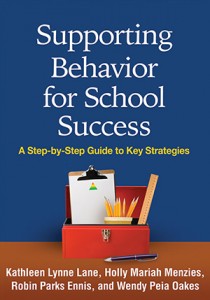
“Designed for busy teachers and other school-based professionals, this book presents step-by-step guidelines for implementing seven highly effective strategies to improve classroom management and instructional delivery. These key low-intensity strategies are grounded in the principles of positive behavior intervention and support (PBIS), and are easy to integrate into routine teaching practice. Chapters discuss exactly how to use each strategy to decrease disruptive behavior and enhance student engagement and achievement. Checklists for success are provided, together with concise reviews of the evidence base and ways to measure outcomes. Illustrative case examples span the full K-12 grade range. Reproducible intervention tools can be downloaded and printed in a convenient 8½” x 11″ size.” (From: Guilford Press)
JOURNAL SPECIAL ISSUE: Ci3T STEP-BY-STEP GUIDE
Volume 58, Issue 3, published May 12, 2014 in Preventing School Failure: Alternative Education for Children and Youth

The Volume 58, Issue 3, 2014 special issue of Preventing School Failure, Designing, Implementing, and Evaluating Comprehensive, Integrated, Three-Tiered Models of Prevention: A Step-by-Step Guide, walks the reader through Ci3T from start to finish. The issue may be purchased through the link above or check with your affiliated university library to see if they have a subscription to Preventing School Failure. You may also view and download companion PowerPoint presentations to each article below.
Abstract: In this introductory article, the authors provide an overview of and rationale for comprehensive, integrated, three-tiered models of prevention—one approach to integrated tiered systems of support. The authors (a) describe core features of comprehensive, integrated, three-tiered models; and (b) discuss associated benefits, emphasizing those for students with and at risk for emotional and behavioral disorders. The authors conclude by providing a brief overview of the articles in this special issue, which collectively offer a step-by-step process for designing, implementing, evaluating, and sustaining comprehensive, integrated, three-tiered models in schools and school districts.
• Download PowerPoint (presentation only, no audio: 994 KB)
• Read the article.
Reference: Lane, K. L., Oakes, W. P., & Menzies, H. M. (2014). Comprehensive, integrated, three-tiered models of prevention: Why does my school — and district — need an integrated approach to meet a students’ academic, behavioral, and social needs? Preventing School Failure: Alternative Education for Children and Youth, 58(3), 121-128. doi: 10.1080/1045988X.2014.893977
Abstract: Comprehensive, integrated, three-tiered models are context specific and developed by school-site teams according to the core values held by the school community. In this article, the authors provide a step-by-step, team-based process for designing comprehensive, integrated, three-tiered models of prevention that integrate academic, behavioral, and social domains. First, the authors discuss the importance of beginning with securing commitments and clarifying agreements. Second, they describe the core elements of a comprehensive, integrated, three-tiered plan. Then, they outline a 6-part, data-informed training series, emphasizing the importance of incorporating feedback from stakeholders to inform design through an iterative process.
• Download PowerPoint (presentation only, no audio: 3.9 MB)
• Read the article
Reference: Lane, K. L., Oakes, W. P., Jenkins, A., Menzies, H. M., & Kalberg, J. R. (2014). A team-based process for designing comprehensive, integrated, three-tiered (Ci3T) models of prevention: How does my school-site leadership team design a Ci3T model? Preventing School Failure: Alternative Education for Children and Youth, 58(3), 129-142. doi: 10.1080/1045988X.2014.893976
Abstract: In this article, the authors clarify the role of the leadership team, providing a rationale for one integrated team to examine academic, social, and behavioral programming, with careful attention to including all key stakeholders. Next, the authors discuss the procedures for teaching all key stakeholders the comprehensive, integrated, three-tiered plan, followed by information on how to reinforce these groups for participation in the plan and meeting expectations. Then, the authors introduce core components needed to ensure accurate decision making with respect to primary prevention efforts: treatment integrity, social validity, accurate detection using systematic screening tools, and data-informed decisions. The authors conclude with a brief summary of how to implement and monitor Tier 1 efforts.
• Download PowerPoint (presentation only, no audio: 4.8 MB)
• Read the article
Reference: Lane, K. L., Oakes, W. P., & Magill, L. (2014). Primary prevention efforts: How do we implement and monitor the tier 1 component of our comprehensive, integrated, three-tiered (Ci3T) model? Preventing School Failure: Alternative Education for Children and Youth, 58(3), 143-158. doi: 10.1080/1045988X.2014.893978
Abstract: In this article, the authors provide an overview of behavior screening tools available, including free and commercially available options. Next, the authors offer step-by-step procedures for (a) selecting, (b) scheduling, (c) preparing, (d) administering, and (e) scoring and interpreting behaviors screening tools. The authors conclude with recommendations and a brief summary.
• Download PowerPoint (presentation only, no audio: 5.2 MB)
• Read the article
Reference: Oakes, W. P., Lane, K. L., Cox, M. L., & Messenger, M. (2014). Logistics of behavior screenings: How and why do we conduct behavior screenings at our school? Preventing School Failure: Alternative Education for Children and Youth, 58(3), 159-170. doi: 10.1080/1045988X.2014.895572
Abstract: In comprehensive, integrated, three-tiered models, it is essential to have a systematic method for identifying students who need supports at Tier 2 or Tier 3. This article provides explicit information on how to use multiple sources of data to determine which students might benefit from these supports. First, the authors provide an overview of how to make an assessment schedule for all schoolwide data. Second, the authors outline how to create a blueprint for Tier 2 and Tier 3 supports in a given school, including a description of the strategy or practice; inclusionary criteria; data to monitor progress; and exit criteria. Last, the authors provide an overview of how to connect students to support and monitor their progress.
• Download PowerPoint (presentation only, no audio: 1.8 MB)
• Read the article
Reference: Lane, K. L., Oakes, W. P., Ennis, R. P., & Hirsch, S. E. (2014). Identifying students for secondary and tertiary prevention efforts: How do we determine which students have tier 2 and tier 3 needs? Preventing School Failure: Alternative Education for Children and Youth, 58(3), 171-182. doi: 10.1080/1045988X.2014.895573
Abstract: School-site and district-level leadership teams rely on the existing knowledge base to select, implement, and evaluate evidence-based practices meeting students’ multiple needs within the context of multitiered systems of support. The authors focus on the stages of implementation science as applied to Tier 2 and Tier 3 supports; the importance of school-site expertise to select, implement, and monitor the use of evidence-based Tier 2 and Tier 3 practices to address the academic, behavioral, and social needs of students; and evidence-based guidelines for professional development. Together these practices ensure school-site leadership teams focus available resources for addressing data-based needs and achieving desired student outcomes.
• Download PowerPoint (presentation only, no audio: 1.8 MB)
• Read the article
Reference: Oakes, W. P., Lane, K. L., & Germer, K. A. (2014). Developing the capacity to implement tier 2 and tier 3 supports: How do we support our faculty and staff in preparing for sustainability? Preventing School Failure: Alternative Education for Children and Youth, 58(3), 183-190. doi: 10.1080/1045988X.2014.895575
BOOKS
Supporting Behavior for School Success: A Step-by-Step Guide to Key Strategies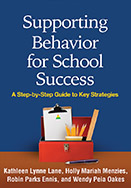
Managing Challenging Behaviors in the Classroom: Research-Based Strategies That Work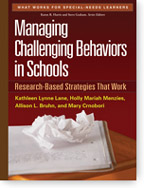
Systematic Screenings of Behavior to Support Instruction: From Preschool to High School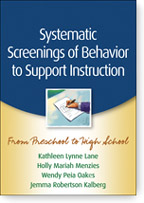
Functional Behavior Assessment and Function-Based Intervention: An Effective, Practical Approach
School-Based Interventions: The Tools You Need To Succeed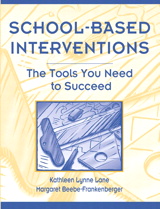
Research-Based Strategies for Improving Outcomes in Behavior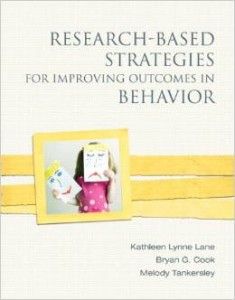
Defusing Disruptive Behavior in the Classroom
Simple Strategies for Teaching Children at Risk
Integrated Multi-Tiered Systems of Support: Blending RTI and PBIS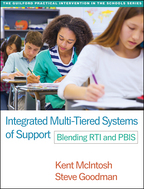
Responding to Problem Behavior in Schools: The Behavior Education Program (3rd Edition)